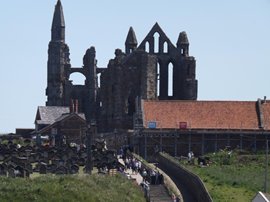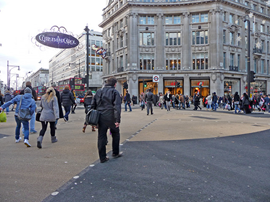How to identify a historic building
There is no doubt that Saint Paul’s cathedral or a Cotswold’s thatched-roof cottage are historic buildings. It is clear then that not all historic buildings are majestic and famous.
We can quickly identify these buildings as historic, but they don’t seem to have much in common; one is public, the other is private. They also differ in size and style. They belong to different times in history and serve different purposes. The Cotswold cottage uses local stone. Saint Paul’s shines in Portland stone, a material traditionally used for public buildings in the City of London. There is an extra layer, an element that defines such different buildings under the same label: ‘historic’.
The term historic clearly refers to history, and therefore the clue is in the 4th dimension: time. Historic buildings, independently from their appearance, can tell us about their own time, their past events. The Cotswold cottage tells us about the time when buildings used local resources and were shaped to adapt to the local climate.
Historic buildings have the quality to encapsulate the traits of a past time. They can tell us about the culture, the economy or the technology of their time, or the time they have lived through. For instance, Saint Paul’s tells us of its medieval origin and its presence during WWII. It tells us about the classical taste during its reconstruction in the late seventeenth century, and it shows the advances in mathematics by the achievement of its dome.
Nevertheless, time is relative, and so is the concrete definition of historic building. Conceptually it is challenging to establish a virtual line to point to the time when buildings stop being historic and are just buildings. This virtual line keeps moving as time passes by. The cultural and political context is crucial when defining this virtual line. For instance, preservation rules in the USA offer a guideline of 50 years to locate this invisible line. In Hong Kong, the conservation rules advise that buildings should be older than 30 years. Similarly, Historic England, the body that reports on the protection of historic buildings in England, considers that a 30 years period allows sufficient time perspective to understand the significance of a building.
Historic buildings can come in many forms beyond listed buildings. Signs of history are present in traditional buildings, buildings in conservation areas, buildings of local interest, buildings in world heritage sites or the place where you live. Buildings with no statutory protection can also have value as a heritage asset. British Standard 7913:2013 and national and international bodies, like SPAB and ICOMOS, recognise their value.
Conservation is not just for the care of those historic buildings legally protected. The use and maintenance of historic buildings can benefit owners, users, and communities. There are the aesthetic benefits of enjoying architecture that is different to today. It also offers creative opportunities, in particular in the case of upgrading buildings to current standards and in the reuse of existing structures to create new uses and spaces.
--Historic Building Studio 17:53, 11 Mar 2022 (BST)
[edit] Related articles on Designing Buildings
IHBC NewsBlog
Notre-Dame Cathedral of Paris reopening: 7-8 December
The reopening is in time for Christmas 2025.
Stirling Prize-winning Salford building to be demolished
The Centenary Building will be bulldozed as part of the wider £2.5bn Crescent regeneration project
Volunteers work to transform 100-year-old ‘hidden’ building into bothy
The building, named Druimnashallag, is located southeast of Oban.
The new ‘Arches for HERs’ Demo site, from the Getty Conservation Institute via HE
It shows how organisations responsible for historic environment records (HER) management can benefit from its powerful features.
ICOMOS-CIF 2024 Symposium celebrates 40th anniversary in Venice
It aims to critically review current practices and theories of conservation of built heritage around the world, and more.
HES establishes new national centre for retrofit of traditional buildings
HES plans to develop the centre follows £1m of funding from UKRI Arts and Humanities Research Council.
High Court rejects oral appeal against tower block decision in historic Bloomsbury
The request was for a full Judicial Review hearing against Camden Council’s approval of a 74m-high tower block in Bloomsbury.
Mayor of London and Government announce bold plans to transform Oxford Street
Plans include turning the road into a traffic-free pedestrianised avenue, creating a beautiful public space.
Crystal Palace Subway, for 160th anniversary
The remarkable Grade II* listed Crystal Palace Subway in South London begins a new era following major restoration.
National Trust brings nature back to an area twice the size of Manchester in less than a decade
The National Trust has achieved its aim of creating or restoring 25,000 hectares of priority habitat on its land by 2025.



















